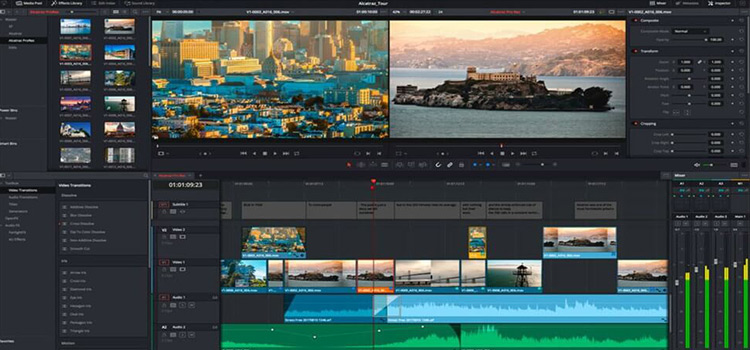5 Steps for Building a Successful E-Learning Website
As remote learning and work become the new norm, traditional ways of doing things become outdated and ineffective. Building an e-learning website is a profitable investment to be done for the changing times. The article tells how to build an e-learning website successfully.
The global digital education market reached $11.5 billion in 2021 and is expected to account for $46.7 billion by 2026.
However, building a successful e-learning website requires a lot of planning and effort. It has to be designed in such a way that it is user-friendly, engaging, and provides an overall enjoyable experience. To achieve this, one needs to pay attention to the different aspects of the website, like content, design, navigation, usability, and security.

The website’s content should be well-structured so that users can easily find what they want. The design should be attractive and intuitive to capture the user’s attention. Navigation should be straightforward so that users can easily move from one section to another. Usability should also be considered when building an e-learning website, as it will determine how easy it is for users to use the site. Lastly, security measures must also be implemented to protect user data from malicious attacks or unauthorized access. In this article, we will discuss eLearning website development and its benefits.
Why Should You Build an E-learning Website?
Building an e-learning website can be a great way to improve your business and reach potential customers. An e-learning website allows you to provide educational materials, courses, and other learning resources that can help your target audience learn more about a particular subject or topic. With an e-learning website, you can also provide interactive features such as quizzes, tests, and videos that can help engage your users and make their learning experience more enjoyable. Furthermore, an e-learning website can also help you monetize your content by allowing you to charge for access or subscription fees.
Building an e-learning website is a great way to reach students around the world, as it eliminates geographical boundaries and provides students with access to quality educational materials and resources. It also helps instructors create engaging content that can be accessed by learners anytime, anywhere. Additionally, an e-learning website can help instructors track student progress and provide feedback in real time, which is essential for successful learning outcomes.
Based on an Open Innovation study, e-Learning has brought many advantages to both learners and tutors, including:
- flexible schedules and communication;
- time and cost savings;
- greater opportunity for postgraduate study;
- better attendance at classes.
How to Build an E-learning Website?
Building an e-learning website can be a daunting task. But with the right tools and techniques, it can be done quickly and easily. Now, let’s discuss the steps that you need to take to build an e-learning website from scratch:

1. Come up with an Idea
If you are looking to build an eLearning website, the first step is to develop a good idea. It is important to have an idea that will be attractive to potential learners and will provide them with the information they need. You should also think about how you can make your eLearning website unique and stand out from the competition.
2. Research Competitors
One of the most important steps in this process is researching competitors. By understanding what your competitors are doing, you can identify what works and create a better product. Researching competitors can help you identify new opportunities, assess market trends, and develop strategies to differentiate yourself from the competition. It’s essential to understand who your competitors are and how they’re approaching their e-learning business to make sure that your e-learning website stands out from the rest.
3. Design and Development Stage
Building an e-learning website requires a combination of design and development stages. The design stage involves creating the structure of the website, while the development stage involves coding and implementing the features. It is important to understand both stages to build a successful e-learning website.
The design stage includes planning out the user experience, creating wireframes, and designing the visual elements of the site. This includes choosing colors, fonts, images, and other visual elements that will make up your e-learning website.
The development stage involves coding all of the features that will be included on your site, such as interactive elements, quizzes, video content, and more. It also includes testing with a development team to ensure everything works correctly before launching your e-learning website.
To get the best developers, you can always turn to Sloboda Studio. They are a full-cycle software development company with over a decade of experience building e-learning platforms.
Prototyping
Prototyping is an essential part of the design and software development process. It helps to quickly test and evaluate ideas, experiment with different designs, and create a proof of concept before committing to a full project.
Prototyping can be used for anything from web design to product development, allowing developers to quickly iterate on ideas without having to invest too much time or resources.
By using prototyping tools, designers and developers can create high-fidelity mockups that accurately represent their vision and ensure that their projects are feasible before investing in more complex solutions.
UI Design
It is the process of creating user interfaces that are visually appealing and easy to use. UI design involves creating a visual representation of the interface, including its layout, colors, fonts, and other elements such as icons and buttons. It also includes developing the logic behind how the interface works, including how users interact with it and how data is displayed.
UI designers must have a good understanding of user behavior to create effective designs that make users feel comfortable while using the software. By combining their technical expertise with creative problem-solving skills, UI designers can create beautiful and functional user interfaces that help users achieve their goals more easily.
4. Development
This is the stage where the actual coding takes place. Software developers add functionality to the e-learning website or app based on the prototype and research done in the previous stages. It is often the most time-consuming stage.
5. Testing & Debugging
Testing and debugging are two of the most important aspects of software development. Testing allows developers to identify and fix errors in their code before they are released. Debugging helps developers identify the source of any errors found during testing so that they can be fixed quickly and efficiently.
By taking the time to thoroughly test and debug their code, developers can ensure that their software is reliable and secure. Furthermore, this process helps to improve user experience by ensuring that software runs smoothly and without any unexpected issues or bugs. With the help of automated testing tools, developers can save time while ensuring quality assurance for their products.
Tech Stack to Create an E-learning Website
The tech stack you choose will determine the features and functionality of your website, so it is important to select the right one. Using the right set of tools and technologies ensure that the website is secure, efficient, and user-friendly. The tech stack for an e-learning website should include a variety of tools such as databases, hosting services, content management systems, and other web development frameworks.
Development Team
The development team should have a clear understanding of the project requirements and objectives to create a successful e-learning platform. They must be able to collaborate effectively with each other to ensure that all aspects of the website come together seamlessly. Additionally, they should be able to work with the client’s existing technology stack to create an effective and efficient user experience. With the right development team, you can create an engaging e-learning website that meets your customer’s needs and expectations.
Final Thoughts
The e-learning industry is growing at an unprecedented rate, and more and more businesses are looking to build successful e-learning websites. To do this, they must put in place the right infrastructure and design strategies to ensure that their website is user-friendly, engaging, and provides a great learning experience. So, when building an e-learning website, here are the things you need:
- Come up with an idea
- Research competitors
- Choose the right tech stack
- Select a development team
- Design and build a prototype
Subscribe to our newsletter
& plug into
the world of technology





